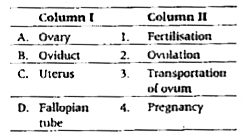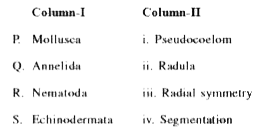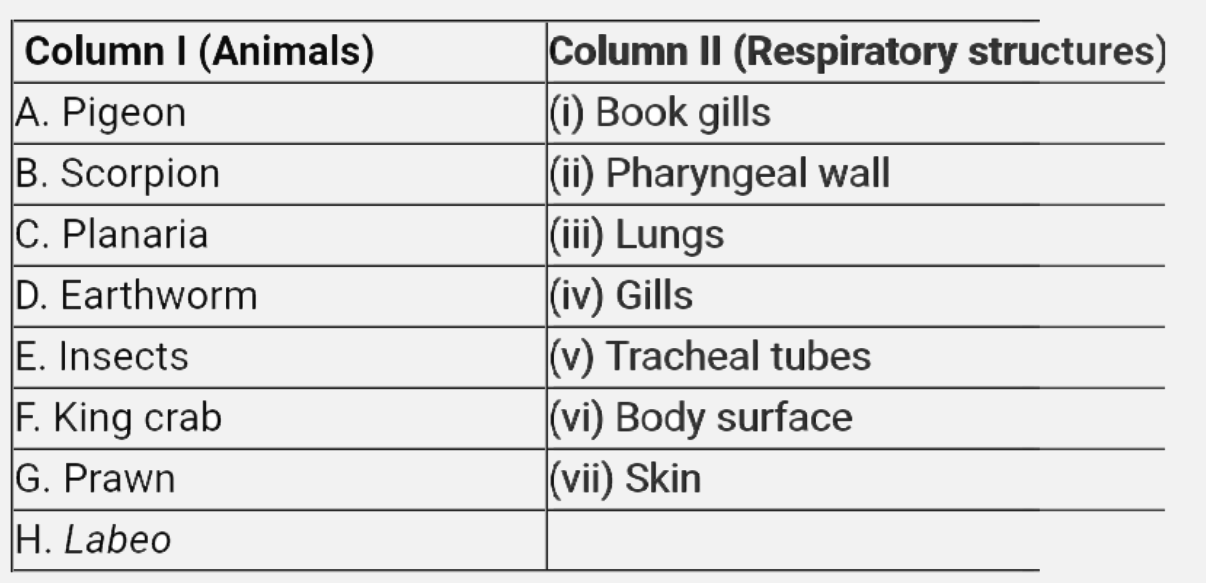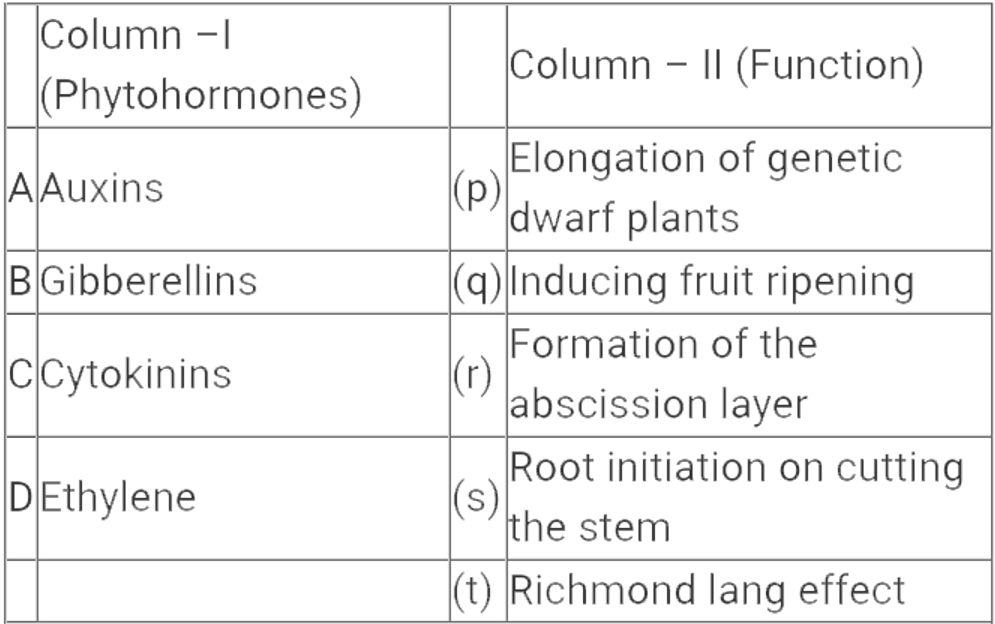Match the combination of springs shown in Column 1 with their respective time periods in Column II.

A
a-(i), b - (ii), c-(iv), d - (iii)
B
a- (iv), b, (iii), c-(i), d - (ii)
C
a-(iii), b -(i), c-(iv), d - (ii)
D
a-(i), b - (iii), c-(ii), d - (iv)
Text Solution
The correct Answer is:B
In figure A, two springs are connected in parallel. The effective spring constant is, keff=k1+k2
∴T=2π√mk1+k2,A−s
In figure B, two identical spring are connected in parallel. The effective spring constant is
keff=k=k=2k∴T=2π√m2k,B−r
In figure C, two identical spring are connected in series. The effective spring constant is
1keff=1k1+1k2=k2+k1k1k2 or keff=k1k2k1+k2
∴T=2π√m(k1+k2)k1k2,C−p
In figure D, two identical spring are connected in series. The effective spring constant is
Keff=(k)(k)k+k=k2∴T=2π√2mk,D−q
|
Topper's Solved these Questions
Similar Questions
Knowledge Check
Match the organs in Column I with their respective roles in Column II.
 AABCD1234BABCD2143CABCD4321DABCD3421
AABCD1234BABCD2143CABCD4321DABCD3421Match the vitamins listed in Column - I with their respective coenzyme form in Column - II . Choose the correct combination .
 AP-v , Q - iii , R-i , S-ivBP-iii , Q - iv , R - ii , S- iCP-i , Q - ii , R - v, S - iiiDP-i , Q - iv , R - ii , S - iii
AP-v , Q - iii , R-i , S-ivBP-iii , Q - iv , R - ii , S- iCP-i , Q - ii , R - v, S - iiiDP-i , Q - iv , R - ii , S - iiiMatch the species in Column-I with their respective feature of body organisation in Column-II.

Choose the CORRECT combination.AP-ii, Q-i, R-iv, S-iiiBP-ii, Q-iv, R-i, S-iiiCP-iii, Q-iv, R-i, S-iiDP-iv, Q-iii, R-ii, S-i
Match animal in column l with their respective respiratory structure in column II.

View SolutionMatch the column I and column II.

View SolutionMatch the phytohormones given in column I with their functions given in column II. Choose the answer with the correct combination of the alphabets of the two-column.

View SolutionMatch the phytohormones given in column I with their functions given in column II. Choose the answer with the correct combination of the alphabets of the two-column.

View SolutionMatch the type of immunity listed in Column I with the examples listed in Column II the correct combination of alphabets of the two Column.

View Solution

